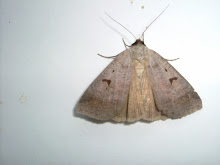Your
Little Owl pellets contained a number of the necessary bits which allowed me to
confirm my original suspicions of your leaf beetle – it is Chrysolina
oricalcia. The species is afforded the national status of Notable B –
occurring in between 31 and 100 10km squares of the national grid. Other species
in the Little Owl pellets were:
The
ground beetles – Nebria brevicollis (F.) , Pterostichus madidus
(F.) and Pterostichus nigrita/rhaeticus, a
scavenger water beetle – Helophorus sp., a dor beetle – Geotrupes
sp., the dung beetles – Aphodius sphacelatus (Panz.) and Aphodius
fimetarius/pedellus, and a ground dwelling weevil – Barynotus obscurus
(F.). The beetle in the Long-eared Owl pellet was Catops tristis (Panz.). This species, along with most others of the genus, are to be found in rotting detritus – anything from dead mammals/birds, stable refuse and grass heaps – damp owl pellets are ideal. The species is common, so much so that in the mid 1970s a pit fall trap in North Dean Wood, Greetland was overflowing with specimens – they had
pilled in after the remains of a shrew which had inadvertently fallen into the trap.
Many thanks to mike Denton for this information...
The Tawny Owls have had another frog a couple of Birds and another 6 Field voles..


2 comments:
Thats what you call a deep study of Owl pellets, well sorted.
Will get some more Tawny if the weather ever improves
Thanks Bri,its fascinating stuff, ive still got loads of stuff to sort out,I have just found my first bank Vole after discarding it first time as a Field vole..from the LEO pellets
Post a Comment